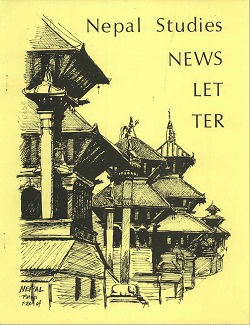Author Biography
Tashi Lundup (PhD, Centre for the Study of Social System/School of Social Sciences, Jawaharlal Nehru University, New Delhi, 2017) is currently teaching at Eliezer Joldan Memorial, College, Leh, Ladakh, as an assistant professor in sociology. His specialization is in tourism and culture with special references to the Himalayan region.
Abstract
This paper is an attempt to understand and conceptualize tourism and changing monastic space in Ladakh with special reference to the Lamayuru monastery. The study adopts a qualitative ethnographic approach, drawing on participant observation as well as interviews with both monks and tourists. It shows how local monastic culture has been reconstructed as a marketable commodity for tourist consumption and explores the tensions that arise from the use of the same monastic space for both religious and secular purposes. The monks’ views in relation to the changing context of tourism at the Lamayuru monastery reflect a dual perspective, representing both ‘religious’ and ‘mundane’ worldviews. From a religious perspective, monks view tourists as fellow human beings who should be treated with compassion, and their visits to the monastery may offer an opportunity to share Buddhist truths. However, the inaccurate information purveyed by tourist guides, and the irreverent behavior of the tourists themselves is often a source of irritation for the monks. Meanwhile, the elderly villagers who visit the monastery as part of their regular religious practice dislike being photographed by tourists. They fear that the tourists’ ‘inappropriate’ dress and lack of respect may pollute the sacred aura of the monastery. Despite these tensions, tourism has become an integral part of both monastic administration and village life. Income from tourism has helped finance the restoration of wall paintings as well as the construction of new shrines. Furthermore, some of the foreign tourists who originally visited Lamayuru as tourists have been inspired to develop a long-term religious relationship with the monastery. The monks’ views in relation to the changing context of tourism at Lamayuru monastery reflect a dual perspective, representing both ‘religious’ and ‘mundane’ world views. From a religious perspective, monks view tourists as fellow human beings who should be treated with compassion, and their visits to the monastery may offer an opportunity to share Buddhist truths. However, the inaccurate information purveyed by tourist guides, and the irreverent behaviour of the tourists themselves is often a source of irritation for monks. Meanwhile, the elderly villagers who visit the monastery as part of their regular religious practice dislike being photographed by tourists. They fear that the tourists’ ‘inappropriate’ dress and lack of respect may pollute the sacred aura of the monastery. Despite these tensions, tourism has become an integral part of both monastic administration and village life. Income from tourism has helped finance the restoration of wall paintings as well as the construction of new shrines. Furthermore, some of the foreign tourists who originally visited Lamayuru as tourists have been inspired to develop a long-term religious relationship with the monastery.
Acknowledgements
First and most importantly, the author would like to express sincere thanks to his supervisor Professor Susan Visvanathan, under whose guidance and expertise he completed this project. Secondly, the author’s warmest thanks go to the monks and the people of Lamayuru for their cooperation and assistance during field work. The author wishes to extend his heartiest thanks to John Bray and Elizabeth Williams Øerberg, who undertook the arduous task of editing the text, and offered suggestions and comments. The author is also thankful to Khempo Sharap for the photograph. Likewise, he would like to thank his wife, Deskid Dolma, under whose companionship he completed this research.
Creative Commons License

This work is licensed under a Creative Commons Attribution-Noncommercial-No Derivative Works 4.0 License.
Recommended Citation
Lundup, Tashi. 2020. The Sacred and the Secular: Exploring Mass Tourism Encounters at Lamayuru Monastery in Ladakh. HIMALAYA 39(2).
Available at:
https://digitalcommons.macalester.edu/himalaya/vol39/iss2/14


